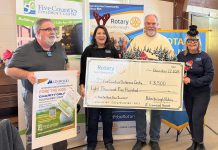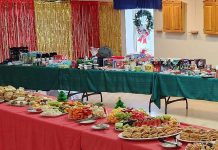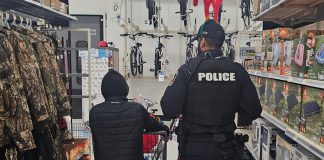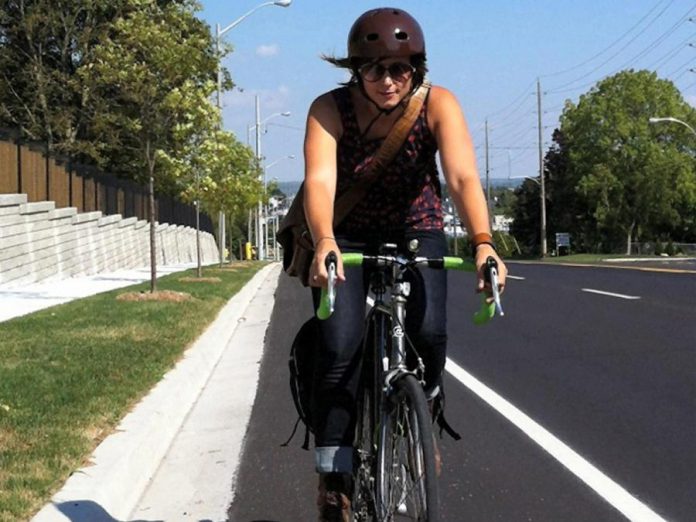
What does it mean to be “green” in 2016?
Being environmentally conscious has meant many things throughout the years, with the focus shifting from planting trees and recycling to pesticides and air pollution, and from carbon emissions to alternative energy sources. These have all been, and will continue to be important environmental issues to consider.
More recently, we are now faced with the many challenges of climate change, the importance of water quality, alternative modes of transportation, local food systems, and continuing to be conscious of energy efficiency. How can we make a difference in 2016 when environmental issues of today seem so vast and complicated?
“It can be challenging to act in a way that prioritizes the health of our environment over other things we value, like convenience and comfort,” shares Brianna Salmon, GreenUP’s Manager of Transportation and Urban Design Programs.
GreenUP programs promote walking, cycling, and transit as greener and healthier modes of transportation — but many of us are not quite ready to give up driving, especially as we begin to experience more wintery weather.
Brianna admits she is not immune to the appeals of driving, but choosing to give up your car doesn’t mean you have eliminated the option to drive. Peterborough’s new car sharing service, Student Car Share, is a great alternative to owning. It means that when you do drive, it becomes a choice that you have to actively make and not one that you can easily and passively default to.

“My challenge is to car pool to work so that I can walk home,” says Bev Bonner, GreenUP’s Finance Manager. Bev has set a goal of doing this a minimum of two days per week and plans to increase the goal throughout the year to minimize her driving and get some exercise, too.
Being green in 2016 surely means making responsible choices. Another way we can do this is when purchasing things for yourself, family, and home.
GreenUP’s Store & Resource Centre Coordinator, Ausma Clappison explains that you can make the choice to purchase items that are not mass produced and that are created with minimal impact to the environment.
“My personal challenge is to support local entrepreneurs by choosing to purchase items that are creatively constructed with re-usable materials and with little or no packaging.”
GreenUP’s Education Coordinator, Danica Jarvis also recommends taking a holistic approach to making purchases by considering the entire process of creating consumer products and getting them on the store shelves.
“I think we all need to think about where our products are coming from and how they are packaged. As consumers, we can make the right choices for the environment.”
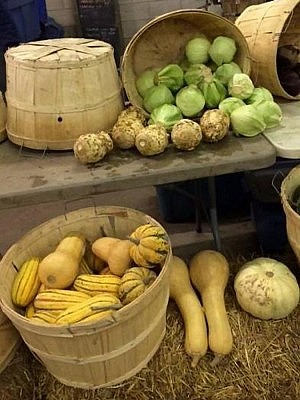
“Shop at your local farmers’ markets,” suggests Jill Bishop, Community Food Cultivator with Nourish. “Eat winter crops that have been grown and stored locally instead of shipped long distances. If you have trouble finding something in season that you love to eat, consider planning to grow it yourself next year.”
A few small changes in your meal planning to swap out in-season veggies can make a big difference in your quest to be green this year. You can also purchase your favourite fruits and vegetable in bulk while they are in season; then connect with Nourish to learn about canning, freezing, and storing fresh foods to eat throughout the winter.
Spending more time outside in natural areas is a great and easy way to be green in 2016.
“We live in a beautiful city that has many natural areas for us to explore and experience nature,” Danica explains. “We have Jackson Park, GreenUP Ecology Park, and many other green spaces where we can cultivate our relationship with the natural environment right here within the city.”
In order to build this relationship with the natural environment, Jill also suggests that we can “Grow something! Anything!”
Jill explains that growing our own plants connects us to nature and its processes. She also states that there is a wonderfully positive effect on our mental health when we see things growing and sprouting, especially during the winter.
Henry Bakker, GreenUP’s Green Business Coordinator reminds us that being “green” means knowing who we are, where we are, and how to be here. He points to two fundamental elements, stories and soil, which root us in these questions about ourselves.
“Soil and stories are both life-giving; they feeds us and they locate us. To support the soil’s natural potential to sustain us, is to support ourselves; to share our stories is to become connected with each other.”
Being green this year doesn’t have to be complicated or difficult. Being green means thinking about how you can effectively make changes, big or small, in your own life that are responsible and ethical. These are personal choices that will fit into your lifestyle, schedule, and budget — and don’t forget to share your story with your friends and neighbours.
To discover more ways to be green, visit www.greenup.on.ca.




